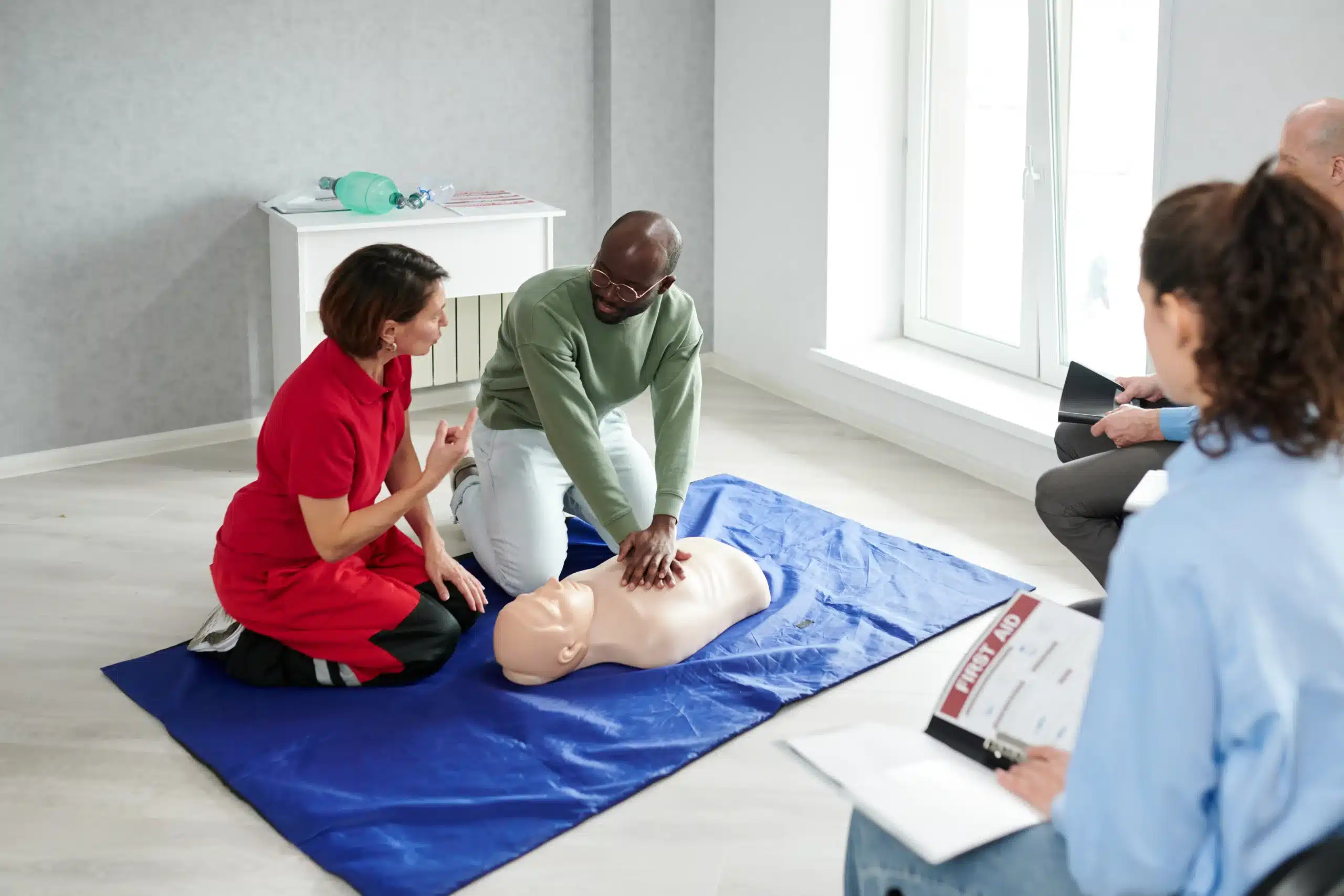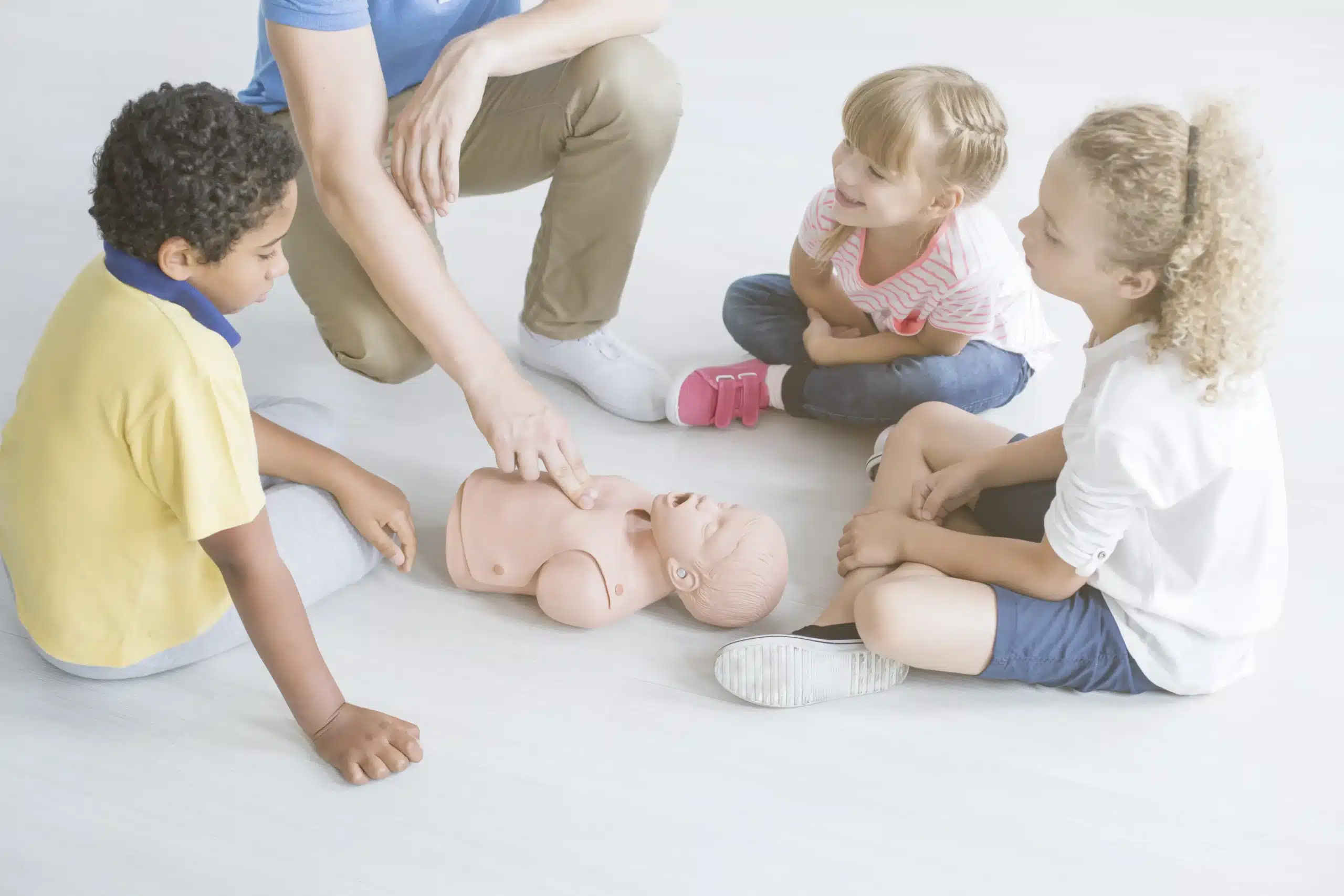Ensuring workplace safety isn’t just about compliance; it’s about saving lives. Workplace CPR and first-aid training hold unprecedented importance. From minor injuries to life-threatening situations, knowing how to respond makes all the difference.
Why is CPR and First-Aid Training Crucial?
Every workplace has its share of risks. Accidents can happen anytime, and being prepared is key. CPR and first-aid training empower employees to take control in emergencies. These skills save lives and reduce the severity of injuries.
Consider a scenario where a colleague collapses. Immediate CPR can double or triple survival chances. With training, employees remain calm and confident when it matters most. This transforms a potentially tragic situation into a manageable one.
Furthermore, comprehensive training builds a safer work culture. Employees feel valued and protected, resulting in increased morale and productivity. They know their workplace prioritizes their well-being.
The Role of First-Aid in the Workplace
First-aid involves assessing and assisting individuals in distress. It ranges from treating minor cuts to stabilizing severe injuries. This initial care minimizes complications and speeds up recovery.
Common workplace injuries include cuts, burns, and sprains. Swift action prevents conditions from worsening. For instance, cleaning and bandaging a wound reduces infection risk. Applying a cold compress on a sprain alleviates pain and swelling.
Equipping employees with first-aid knowledge reduces the strain on emergency services. In turn, this ensures quicker response times for critical cases. It also fosters a proactive safety culture.
How Training Reduces Workplace Liability
Investing in CPR and first-aid training shields businesses from legal repercussions. Employers who neglect safety protocols face hefty fines and lawsuits. Training demonstrates due diligence and commitment to employee welfare.
When employees are trained, they can prevent accidents before they occur. They recognize hazards and take steps to mitigate them. This reduces workplace incidents and potential legal action.
Furthermore, trained staff respond effectively in emergencies, minimizing harm. This proactive approach builds trust and respect within the team. Employees feel reassured knowing their employer prioritizes safety.
Building a Safety-Conscious Culture
A safety-conscious culture thrives on awareness and responsibility. Training empowers employees to take an active role in maintaining a safe environment. They become vigilant and report potential hazards.
Regular training sessions reinforce the importance of safety. They provide an opportunity to refresh skills and learn new techniques. This ensures employees are always prepared for any situation.
Promoting safety at work extends beyond formal training. Encourage open communication about safety concerns. Recognize and reward employees who demonstrate safety leadership.
The Impact of CPR and First-Aid Training on Morale
Training boosts confidence and morale. Employees feel equipped to handle emergencies, reducing anxiety. They appreciate their employer’s investment in their personal and professional development.
High morale leads to increased job satisfaction and productivity. Employees are more engaged and committed to their roles. They take pride in being part of a safety-conscious organization.
A positive workplace environment attracts and retains top talent. Prospective employees value safety as a fundamental aspect of job satisfaction. They seek employers who prioritize their well-being.
Addressing Common Misconceptions
Some believe CPR and first-aid training is unnecessary. They assume emergencies are rare or that professionals will always be available. However, immediate action often determines the outcome of an emergency.
Others worry about legal liability when administering aid. Good Samaritan laws protect those who provide assistance in good faith. Proper training ensures actions are within legal guidelines.
Finally, there’s a misconception that training is time-consuming and costly. Many organizations offer flexible and affordable training options. The benefits far outweigh the initial investment.
Implementing a Training Program
To implement a successful training program, assess workplace needs. Identify common risks and tailor the training accordingly. Engage a certified training provider to deliver high-quality instruction.
Schedule regular training sessions to reinforce skills. Make attendance mandatory to ensure comprehensive coverage. Provide ongoing support and resources for employees to stay informed.
Evaluate the program’s effectiveness through feedback and assessments. Adjust the training content based on changing workplace dynamics. Celebrate milestones and improvements to maintain motivation.
The Future of Workplace Safety
As workplaces evolve, so do safety challenges. Continuous learning is crucial to stay ahead of emerging risks. Advanced training techniques prepare employees for new threats.
AI and machine learning enhance safety protocols. Predictive analytics identify potential hazards before they occur. This proactive approach minimizes risk and enhances workplace well-being.
Workplace safety is a shared responsibility. Employees and employers must collaborate to create a secure environment. Together, they build a resilient and thriving workplace.
Conclusion
Workplace CPR and first-aid training are indispensable components of a comprehensive safety strategy. They equip employees with lifesaving skills and promote a culture of vigilance. By investing in training, organizations protect their greatest asset—their people.
Creating a safe work environment requires commitment and collaboration. With the right training, employees become empowered guardians of safety. They transform potential crises into manageable situations.






